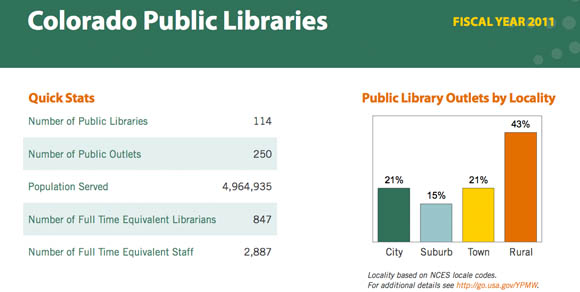
The Institute of Museum and Library Services (IMLS) just released its Fiscal Year 2011 Public Libraries in the United States Report, an annual report that aggregates data from all U.S. public libraries to tease out national trends and state-by-state comparisons. For the first time, this analysis included looking at the relationship between public library investments—revenue, staffing, and resources—and usage—visitation, circulation, program attendance, and computer use. Long story short: “When investment increases, use increases, and when investment decreases, use decreases, and these relationships persist over time.”
Want more specifics? When book and e-book volumes, programs, public access computers, and staffing went up, so did physical visits. When libraries offered more public access Internet computers, computer use went up. When programming and staffing went up, so did program attendance. And when collections and programs increased, so did circulation.
With digital and e-offerings, the picture is a little less clear. Physical visits decreased when investments in e-materials increased, which may be expected if patrons can use more library resources without stepping in the building. However, the report points out an issue near and dear to our hearts here at LRS: We need new survey questions to truly understand what’s happening with e-resources and the delivery and services associated with them.
Take a look at the full report, available here. And for a closer look at Colorado and other states, check out the state profile page. You can also access and manipulate Colorado’s data via our interactive tool.
Note: This post is part of our series, “The Weekly Number.” In this series, we highlight statistics that help tell the story of the 21st-century library.